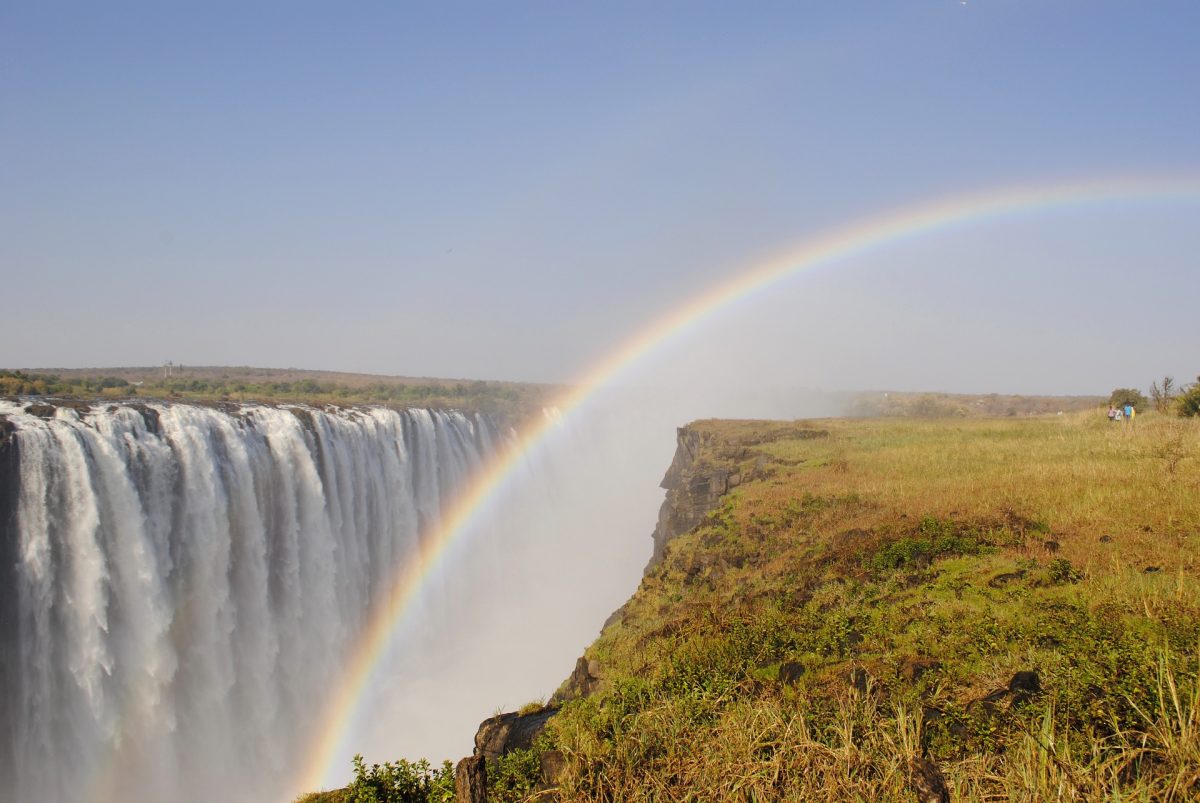It took thousands of years of erosion for Victoria Falls to appear as and where it does now. Mosi-oa-Tunya, or “the smoke that thunders” became known to the western world as Victoria Falls only after David Livingstone first set eyes on this astonishing natural wonder in 1855, a heartbeat ago in geological time.
During the Jurassic Period (150-200 million years ago), volcanic activity resulted in thick basalt deposits covering large parts of Southern Africa. As the lava cooled and solidified, cracks appeared in the hard basalt crust, which were filled with clay and lime. Erosion and the course of the mighty Zambezi River cut through these softer materials, forming the first of a series of waterfalls.
Over at least 2000 years, the falls have receded 8 km upstream, as the Zambezi carved its way through seven gorges. This geological history can be seen in the dark basalt in the series of rocky gorges below the falls. It is believed that the Devil’s Cataract, which is presently the lowest point of Victoria Falls, will eventually become the next gorge as the river continues to cut its way back upstream.
Essentially, the river falls into a gorge directly in front of the falls, and then flows through a narrow cutting. You can view the falls straight on from across the gorge.
Scottish missionary David Livingstone first heard about Victoria Falls, known as Mosi-oa-Tunya, four years before he arrived there. The area was a sacred site for the Batoka and other local tribes. On 17 November 1855, Chief Sekeletu of the Makololo paddled Livingstone to an island in the Zambezi, known as Goat Island. Although the water was low at the time, Livingstone still felt a “tremor of fear” as he approached the wall of spray.
Gazing down into the churning chasm below must have been a heartstopping experience (you can still make your way out to the island, now called Livingstone Island, from the Zambian Side during the dry season). Rumours that a Portuguese man beat him to it have little evidence. Livingstone described what he saw: “No one can imagine the beauty of the view from anything witnessed in England. It had never been seen before by European eyes; but scenes so lovely must have been gazed upon by angels in their flight.”



